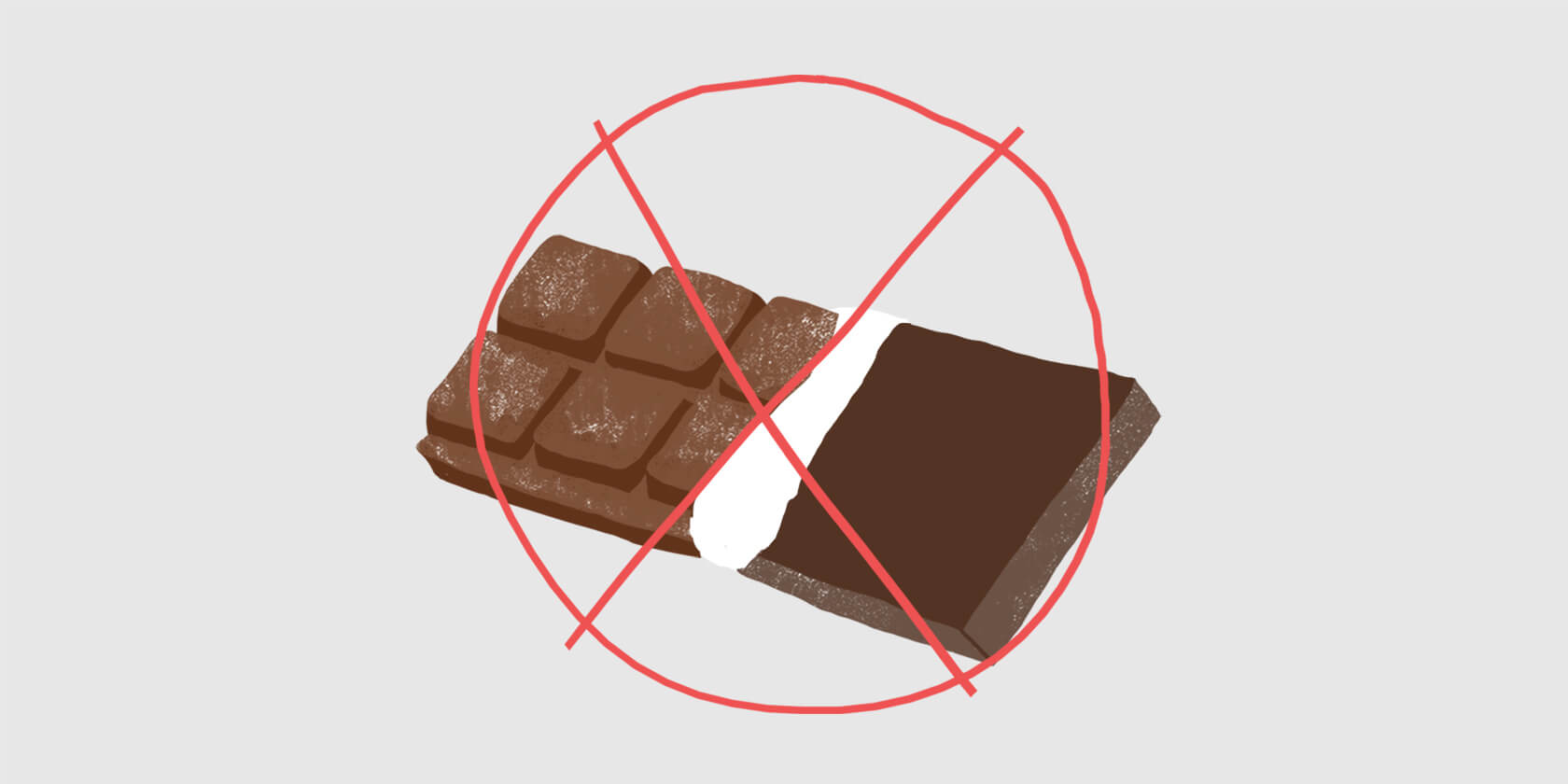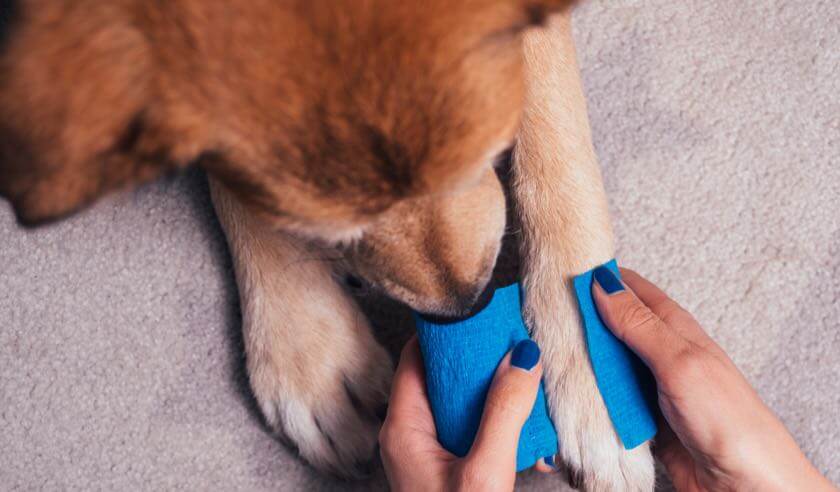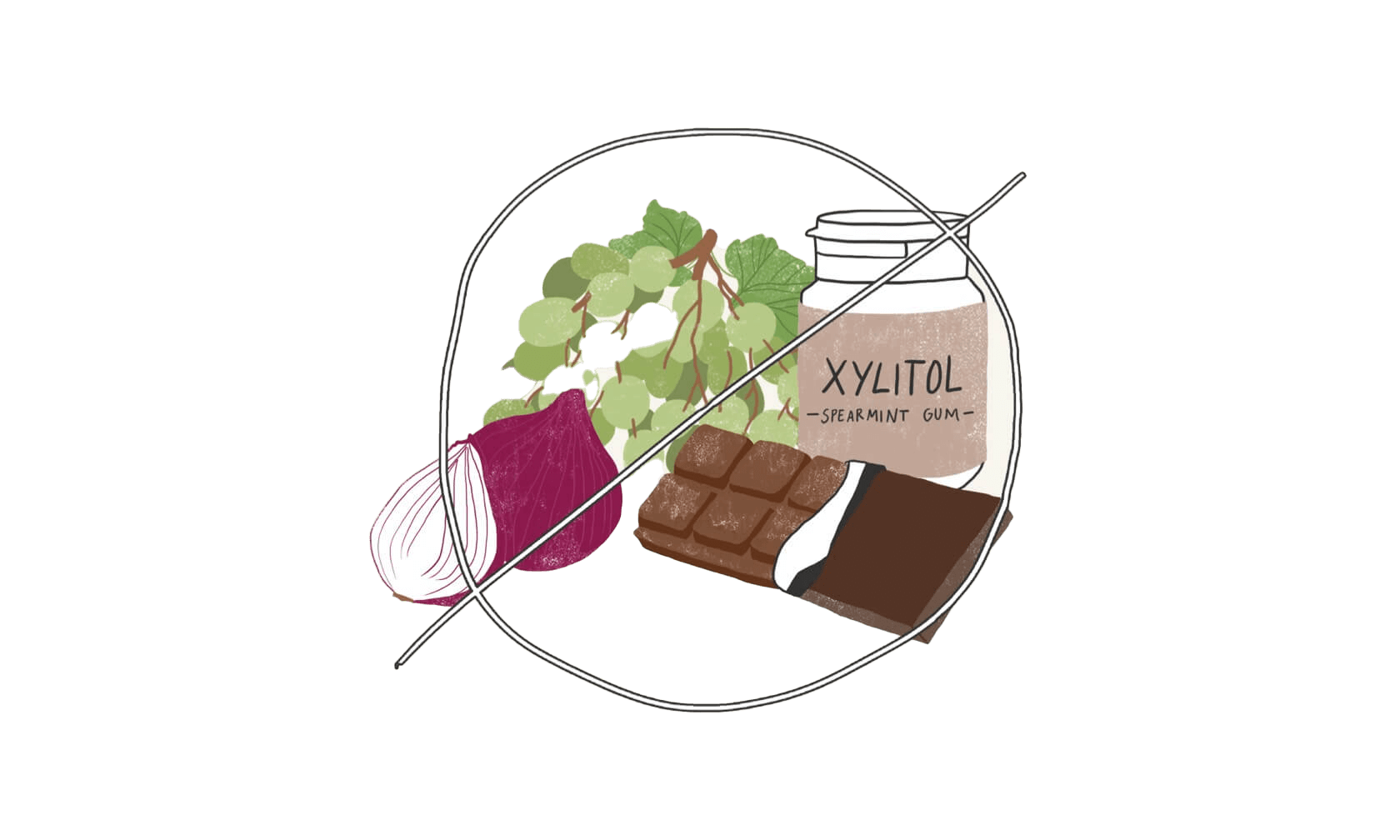While a chocolate bar may be the perfect treat for us humans, it can be deadly for your dog. While this may seem like common knowledge, there’s actually more to the story. Despite your best efforts to hide your chocolate stash from your dog, they may get their paws on some anyway. Here’s everything you need to know about chocolate and your dogs, including what to do if they accidentally get a taste.

The Science Behind Chocolate and Your Dog
The primary problem for dogs with chocolate stems from methylxanthines, a unique class of drugs that are derived from xanthine. If you drink coffee or soda, you’re probably already familiar with a common methylxanthine, caffeine. This class of compounds also includes theobromine, which is the ingredient in chocolate that causes the most problems for dogs.
The main thing to watch out for is the amount of theobromine a dog might eat. The darker the chocolate, the more theobromine. As a rule of thumb, the more bitter the chocolate tastes, the darker it usually is, and therefore the worse it is for dogs. And the more chocolate a dog eats, the more theobromine they ingest.
Additionally, the toxicity depends on the size of the dog and the type of chocolate (as well as any chronic medical conditions the dog has or medications the dog is on). For example, 2 ounces of milk chocolate might be mild for a 20-pound dog, 2 ounces of dark chocolate would result in moderate toxicity, and 2 ounces of baking chocolate would be severely toxic.
Signs Your Dog Has Ingested Chocolate
If your dog does manage to get into your secret chocolate stash, they may display one or more of the following symptoms, depending on how much theobromine they ingested.
- Hyper-Excitability and Anxiousness
- Seizures
- Rapid Heart Rate
- Abnormal Heart Rhythms
- Cardiac Arrest
- Vomiting and Diarrhea
Theobromine is most dangerous to a dog’s central nervous system (their brain) and their heart. Depending on the amount eaten and the dog’s size, a large enough dose of theobromine from chocolate can be fatal.
Dog Chocolate Poisoning — What to Do
If your dog manages to eat chocolate, consult your veterinarian or poison control immediately: ASPCA Animal Poison Control Center (1.888.426.4435), Pet Poison Helpline (1.800.213.6680). If they are already displaying signs of chocolate toxicity, head straight to your veterinarian or local Animal ER. To quickly locate a veterinarian in your area, use our Veterinarian Finder.
Additionally, the high fat content of chocolate can also put dogs at risk of developing pancreatitis and can contribute to gastrointestinal upset.
Chocolate Alternatives for Dogs
If you’re looking for a dog-safe chocolate alternative, you’re in luck! Carob, a tropical Caribbean pod, tastes very similar to chocolate, but it has a fraction of the theobromine contained in chocolate. Sometimes you’ll see carob also referred to as Locust Pods, Algaroba, or Carob Tree Kharoub.
Want to make your dog a decadent treat? Pick up a bag of carob chips, melt them over a double boiler (or other indirect heat source), and dip a regular dog biscuit for a chocolatey twist. If you’re feeling super crafty, you can even whip up your own dog treats. Keep in mind some dogs may experience GI upset over new foods or treats so only give your pets a small amount of carob.
ZPC-00174R2





